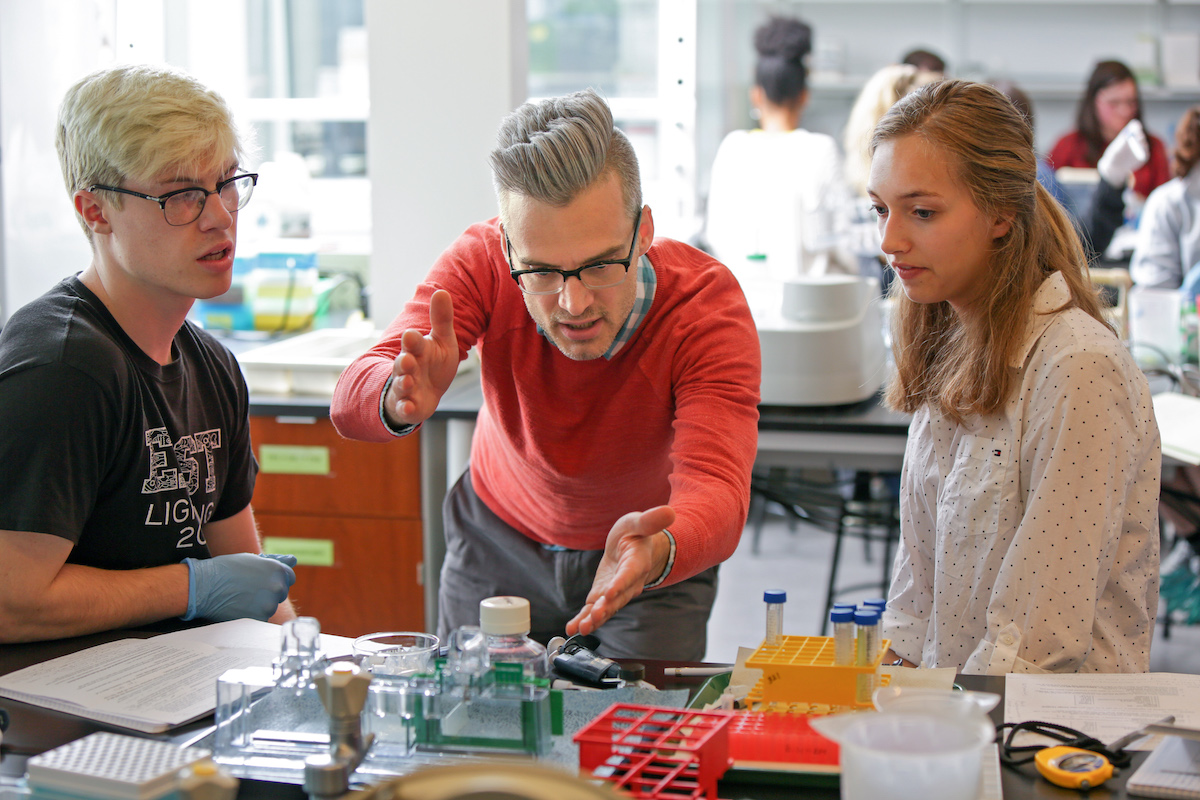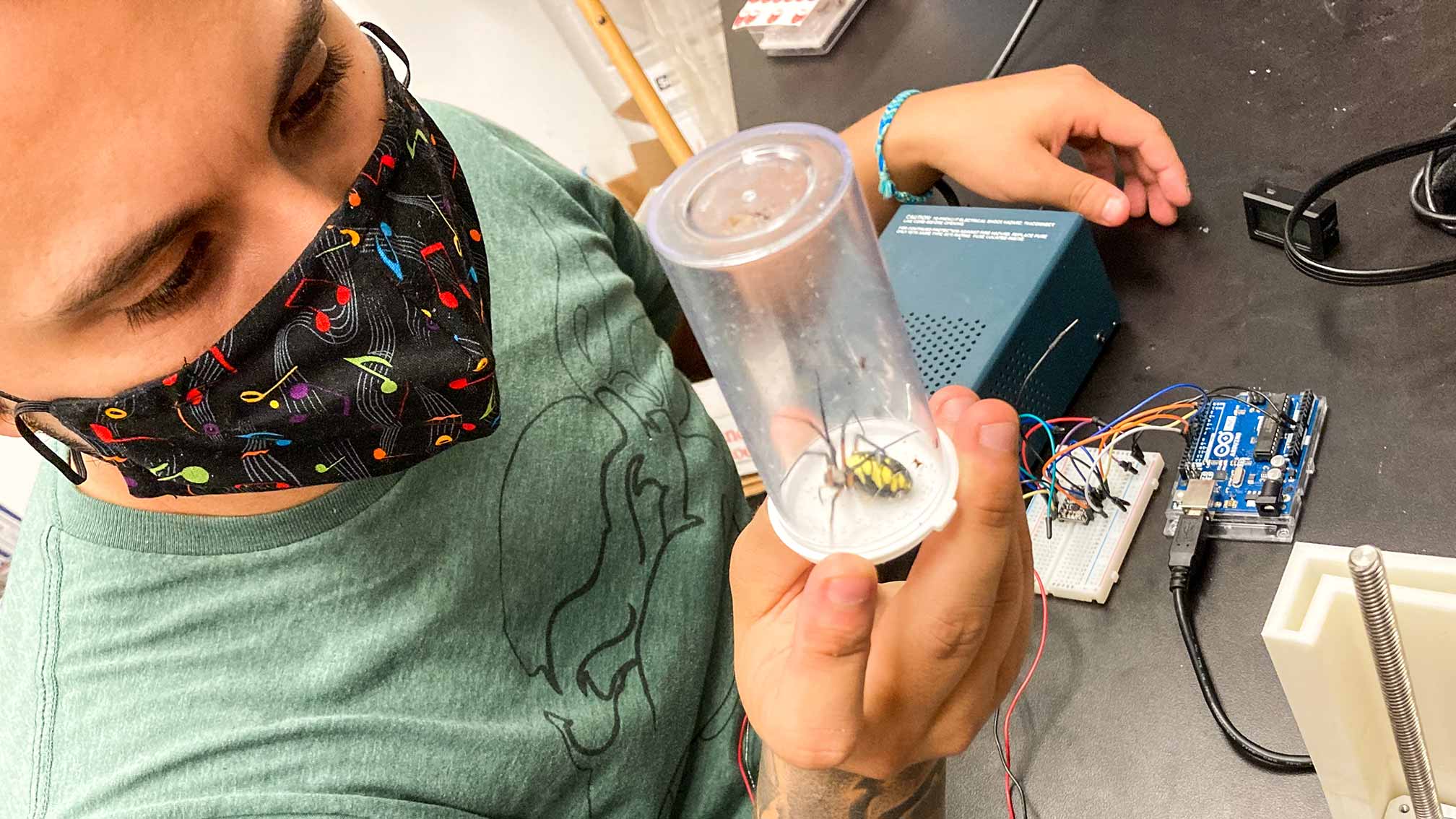John Howard Long

A vertebrate physiologist specializing in biomechanics, John has expanded his research program to examine the locomotor evolution of early vertebrates. New techniques include robotics, cognitive science, physics-based computer simulation, and evolutionary analysis. This cross-disciplinary approach has been made possible by collaborators at Vassar, Lafayette College, Shriners Hospital for Children, University of California, University of North Carolina, Nekton Research, and Duke University. Also essential have been research grants provided by the National Science Foundation and the Office for Naval Research. Foremost, John has benefited from the enthusiasm, brilliance, and creativity of Vassar undergraduates, some of whom have presented the lab’s research at international scientific meetings and in scientific publications.
- PhD 1991 Zoology, Duke University
- BA 1986 Human Ecology, College of the Atlantic
Research Interests
A vertebrate physiologist specializing in biomechanics, John has expanded his research program to examine the locomotor evolution of early vertebrates. New techniques include robotics, cognitive science, physics-based computer simulation, and evolutionary analysis. This cross-disciplinary approach has been made possible by collaborators at Vassar, Lafayette College, Shriners Hospital for Children, University of California, University of North Carolina, Nekton Research, and Duke University. Also essential have been research grants provided by the National Science Foundation and the Office for Naval Research. Foremost, John has benefited from the enthusiasm, brilliance, and creativity of Vassar undergraduates, some of whom have presented the lab’s research at international scientific meetings and in scientific publications.
Teaching Interests
In the Biology Department, John teaches courses in animal physiology, animal diversity, introductory biology, biomechanics, and evolutionary theory. In the Cognitive Science Program, he teaches course in Perception & Action and Mind-Brain Architecture. In the Neuroscience and Behavior Program, John teaches introduction to neuroscience & behavior. In the Environmental Studies Program, he has taught a course on whales & whaling.
John is particularly keen on teaching individual students in independent studies and senior theses. These customized, one-on-one courses function as hands-on research apprenticeships.
Research and Academic Interests
Robotics
Biomechanics
Departments and Programs
Selected Publications
* Student author
- Brawer, J.*, Hill, A.*, Livingston, K., Aaron, E., Bongard, J. and J.H. Long, Jr. (2017). Epigenetic operators and the evolution of physically embodied robots. Frontiers in Robotics and AI 4, 1. doi.org/10.3389/frobt.2017.00001
- Kryvi, H., Rusten, I., Fjelldal, P.G., Nordvik, K., Totland, G.K., Karlsen, T., Wiig, H. and J.H. Long, Jr. (2017). The notochord in Atlantic salmon (Salmo salar L.) undergoes profound morphological and mechanical changes during development. Journal of Anatomy 233, 639-654. doi: 10.1111/joa12679
- Porter, M.E., Ewoldt, R. and J.H. Long, Jr. (2016). Automatic control: The vertebral column of dogfish sharks behaves as a continuously variable transmission with smoothly shifting functions. Journal of Experimental Biology 219, 2908-2919. doi.org/10.1242/jeb.135251
- Long, J.H., Jr. (2015). The Great Courses: Robotics. Chantilly, VA: The Teaching Company.
- Roberts, S.F.*, Hirokawa, J.*, Rosenblum, H.G.*, Sakhtah, H.*, Gutierrez, A.A.*, Porter, M.E., and J.H. Long, Jr. (2014). Testing biological hypotheses with embodied robots: adaptations, accidents, and by-products in the evolution of vertebrates. Frontiers in Robotics and AI 1, 12. doi.org/10.3389/frobt.2014.00012
- Long, J.H., Jr. (2012). Darwin’s Devices: What Evolving Robots Can Teach Us About the History of Life and the Future of Technology. New York: Basic Books.


